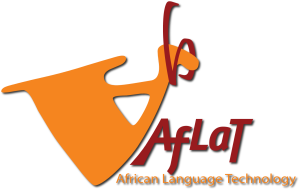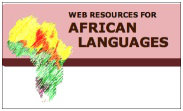What are minority languages? by Innocent Maja
International human rights law does not currently have an agreed definition of a minority language. This section will analyse the definitions proposed by different scholars in a bid to couch a working definition for minority languages.
Firstly, a minority language has been defined as ‘a language spoken by a minority of the population of a country.’ This definition is problematic in that it overlooks the fact that the term ‘minority’ is not yet defined in international law. An understanding of the concept of ‘minority’ is therefore significant to understanding this definition of a minority language.
Francesco Capotorti defines a minority as
A group numerically inferior to the rest of the population of a state, and in a non-dominant position whose members – being nationals of the state – poses ethnic, religious or linguistic characteristics differing from those of the rest of the population and show, if only implicitly, a sense of solidarity, directed towards preserving their culture, traditions, religions and language.
This definition derives from the provisions of article 27 of the International Covenant on Civil and Political Rights (ICCPR) that limits minorities to national, linguistic and religious minorities. According to Capotorti, a minority can be identified by numerical inferiority, non-dominance and solidarity. Jelena Pejic explains the meaning of numerical inferiority, non-dominance and solidarity:
Pursuant to the express language of the definition, the numerical inferiority of a minority is to be established by comparison to the entire population of a state…Non-dominance has been understood not only as relating to political power, but also to economic, cultural, or social status. The sense of solidarity referred to in Capotorti's definition implies an awareness by persons belonging to a minority group of the ethnic, religious, or linguistic characteristics that set them apart from the majority, and a desire to preserve those characteristics as central to the common identity.
It is interesting to note that Capotorti’s definition excludes refugees, foreigners and migrant workers who may arguably be regarded as minorities. This argument is supported by the United Nations Human Rights Committee General Comment No. 23 which states
The terms used in article 27 indicate that the persons designed to be protected are those who belong to a group and who share in common a culture, a religion and/or a language…[They] need not be citizens of the State party… A State party may not, therefore, restrict the rights under article 27 to its citizens alone… Just as they need not be nationals or citizens, they need not be permanent residents. Thus, migrant workers or even visitors in a State party constituting such minorities are entitled not to be denied the exercise of those rights.
Capotorti’s definition is narrow in limiting article 27 of ICCPR to citizens. The Kenyan High Court in IL Chamus v Attorney General of Kenya and Others was therefore correct to hold that minorities under modern and forward-looking jurisprudence should include non-citizens as well. It would therefore follow that a minority language is a language spoken by ethnic, religious and linguistic groups (citizens and or non-citizens) that have a sense of solidarity, are numerically inferior and non-dominant.
Secondly, article 1 of the European Charter for Regional or Minority Languages (European Language Charter) defines minority languages as languages different from the official language(s) of that State traditionally used by part of the population of a state that are not dialects of official languages of the state, languages of migrants or artificially created languages. One weakness of this definition is that it limits minority languages to those spoken by citizens. As argued above, such an approach is inconsistent with article 27 of the ICCPR as read with the United Nations Human Rights Committee General Comment No. 23.
It is important to note that this definition introduces the issue of minority languages vis a vis official languages. It would appear that once a language is accorded official language status by the state, it (together with its dialects) ceases to become a minority language albeit it is spoken by a numerically inferior group of people. An example is English language. Even though very few people in Africa speak it, it is accorded official language status. Because of the protection bestowed by official language status, it is not a minority language. This approach makes sense for two reasons. Firstly, official language status confers language rights and places an obligation on states to ensure the public and private use of official languages. Secondly, official language status accords language rights to a language together with its dialects. It avoids situations where speakers of a dialect of an official language claim language rights that are already accorded to the official language.
In this sense, a minority language can be defined as ‘a language different from the official language(s) of the state traditionally used by part of the population of a state that is not a dialect of official languages of the state or artificially created languages and includes languages of foreigners, migrants and visitors.’
- Login to post comments


